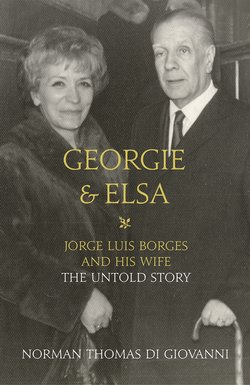Читать книгу Georgie and Elsa: Jorge Luis Borges and His Wife: The Untold Story - Литагент HarperCollins USD, F. M. L. Thompson - Страница 6
1. Celebrating the Marriage
ОглавлениеJorge Luis Borges and Elsa Astete Millán were married at a Buenos Aires registry office on 4 August 1967. The occasion seems not to have excited the notice of the press. On 21 September came a follow-up ceremony in the Iglesia de Nuestra Señora de las Victorias, where both Borges’s mother Leonor and his sister Norah – the two of a religious bent – had married.
These events took place on the eve of Borges’s departure for Harvard University, where, over the following months, he was to deliver the prestigious Charles Eliot Norton lectures. Hitherto a life-long bachelor, Borges was sixty-eight years old at the time of the wedding; Elsa, a widow, with a son in his twenties, was eleven years younger. The trip to Cambridge she described as her honeymoon; as for the lectureship she appeared to look on it as an altogether secondary matter.
The church of their marriage had been built in 1880 in the plain neo-Gothic style of the time and place, the belltower and steeple, with its four pinnacles, towering over the buildings crowded round it. Soon after, in 1883, the edifice was given to the Congregation of the Redemptorists on the day of their first arrival in Buenos Aires. Founded in Italy in 1732, the Congregation is a missionary society whose aim is to put into action Jesus Christ’s command to ‘Love one another as I have loved you.’ In 1884, the Church of Our Lady of the Victories also became a seat of the cult of Our Mother of Perpetual Help, the Byzantine icon of which the Redemptorists are caretakers. Such was the improbable and incongruous setting for the marriage of a man of Borges’s well-known agnosticism and sceptical turn of mind.
In the published pictures of the church ceremony Borges stood staring ahead, hands behind his back, with Elsa on his right and his mother of ninety-one on his left. The church was packed with friends and well-wishers, along with numerous members of the press and their accompanying photographers. The bride wore a black coat-dress, with a pair of long black gloves, and a white turban-like hat with a short, gauzy veil over thick false eyelashes. Neither Georgie nor Elsa looked as if it were the happiest day of their lives. While Leonor appeared solemn, the couple seemed glum.
According to Borges, on the day of their civil marriage his mother told Elsa that to her only a church ceremony counted. The gauntlet had been firmly thrown down at Elsa’s feet.
